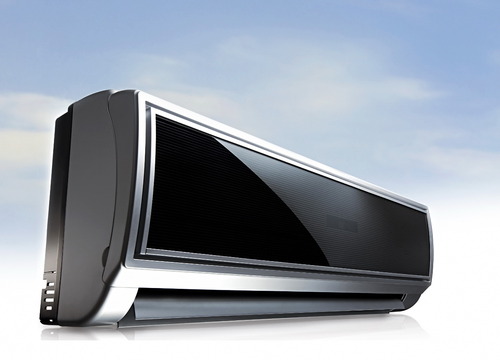
Air conditioners with Wi-Fi function
Ever lost control panel is no longer needed! Wi-Fi allows you to control the air conditioner from a distance - using the Internet. Now you can control the device from laptops, tablets and smartphones. For the first time the air conditioner with such a remote control was introduced in 2012, but in wide use of the model with Wi-Fi control enter just now.
So, now, to turn the air conditioner on and off, to regulate the temperature and mode of operation, not only without the remote control, but also at a considerable distance from the house, you only need an internet connection. And it doesn’t matter where you are: at work, at school, in the subway or at the airport. Just imagine: at the end of the working day, leaving the office, in your smartphone you set the desired parameters of the air, and by your arrival there is already a comfortable temperature in the house.
In order not to set up the air conditioner every time manually, using Wi-Fi Smart technology, you can set the desired program by which the air conditioner will work, for example, a week.
Currently, Wi-Fi control on models that support this feature is available to owners of gadgets on iOS and Android platforms.
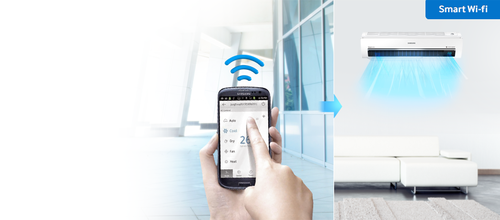
Photo: www.samsung.com
Noise reduction
This innovation will especially appeal to those who appreciate silence and cannot fall asleep to the accompaniment of extraneous sounds. Manufacturers offer two methods. noise reduction during the work of the conditioner. First: a specially designed indoor fan operates at low revs. Second, the distance between the indoor unit and the wall is reduced and thereby reduces vibration. Another interesting way to achieve quiet operation: some models of air conditioners "lose" the front grille, and the air will be much quieter.
Special attention is given to the new Skew Fan technology: with its help, the noise level is reduced to 19 dB. To better understand, imagine: 36 dB - the noise level on a quiet street, 25 dB - a whisper at a distance of 3 meters, and 21 dB - a very good indicator for new air conditioners. Such an amazing result is achieved thanks to the fan blades located at a certain angle to the axis. Air resistance is significantly reduced ... just like noise.
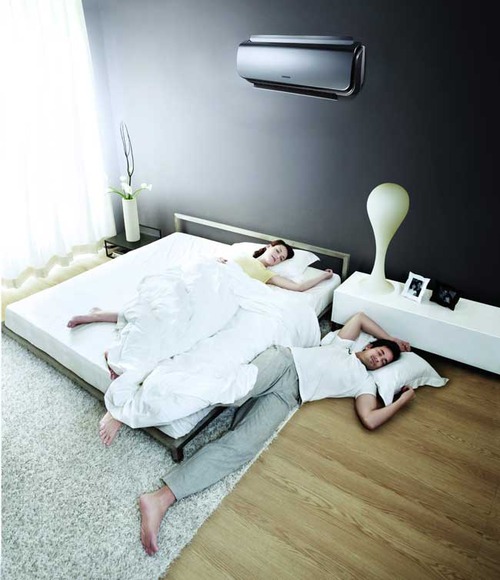
Photo: air-est.com.ua
Motion Sensor
With this innovation, the air conditioner is able to independently determine the presence of people in the room using infrared motion sensor. The infrared rays react sensitively to any human presence, and as soon as someone with a temperature higher than in the room gets into the sensor’s range, he immediately analyzes the difference between these temperatures and sends a signal to turn on the air conditioner. Convenient, isn't it?
The detection mechanism as a whole operates according to the principle of a conventional infrared sensor, but it is equipped with a Fresnel lens (focuses rays from the entire room onto the sensor) and a sensitive sensor. That, in turn, determines two things: the presence of people in the room and the degree of their activity.
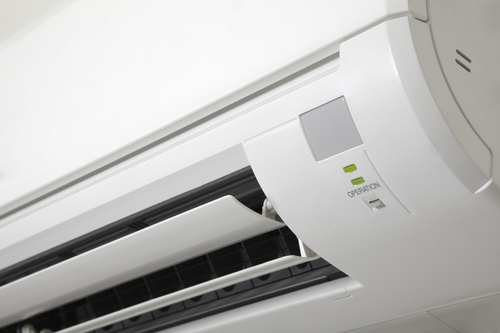
Photo: www.airconservices.com.sg
Air conditioning as a work of art
For many years, manufacturers have honed specifications and worked mainly on the design of climate technology. And then came the moment when design of air conditioners began to play the role of the first plan. A great example is LG’s ArtCool line of air conditioners, which have already entered the market, including ArtCool Gallery with a decorative panel and the ability to change images on it.
In 2015, air conditioners may well become a full-fledged part of the interior. Want a reproduction of Van Gogh over the bed? You are welcome! And for this you do not need to remove air conditioning from the wall.

Photo: g.io.ua
Caring for the environment
Fortunately, people began to understand that it is necessary to take care of the environment, and this affected the environmental standards of using climate technology, or more precisely, their tightening. Now in Europe, the demand for air conditioners with natural and, most importantly, safe refrigerants. Those residents of the Old World, who already have installed climatic equipment with fluorinated refrigerants, are in a hurry to transfer their equipment to natural ones.
There are quite a lot of them: propane, butane, isobutane, ammonia, carbon dioxide and others. The most promising and safest of them is propane. Firstly, it does not harm the ozone layer, secondly, it does not potentially affect global warming.
Following Europe, domestic producers are also planning to move to European environmental standards, and in this sense, 2015 may be a milestone year.
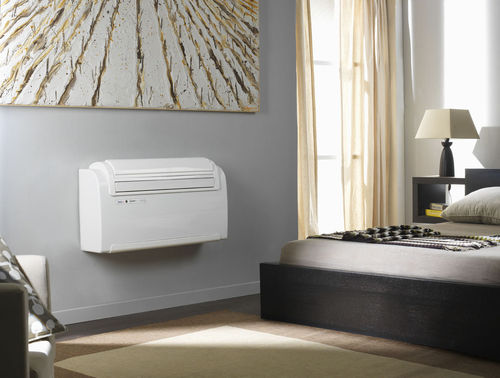
Photo: www.eurofitdirect.co.uk
Fundamentally new refrigerant R32
Leading Japanese experts are actively exploring the market for refrigerants and offer us something no less attractive than propane. The refrigerant, designated as R32, boasts significant advantages. First of all, he, like the natural "brothers", is almost harmless to the environment. Another plus: R32 is less dense and viscous than others, which means that with equal performance it needs almost 30% less. Saving! In addition, the same low viscosity minimizes pressure loss, thereby increasing the overall efficiency of the air conditioner.
In simple terms, the new refrigerant is safer, more economical and more efficient than its competitors. This means that air conditioners running on it will consume less electricity, cost less, and not harm the environment.
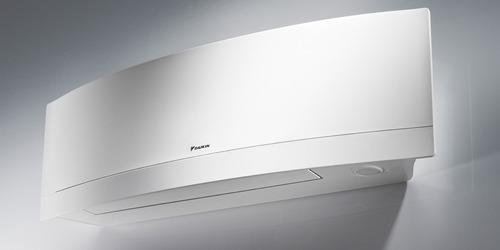
Photo: static.red-dot-21.com
